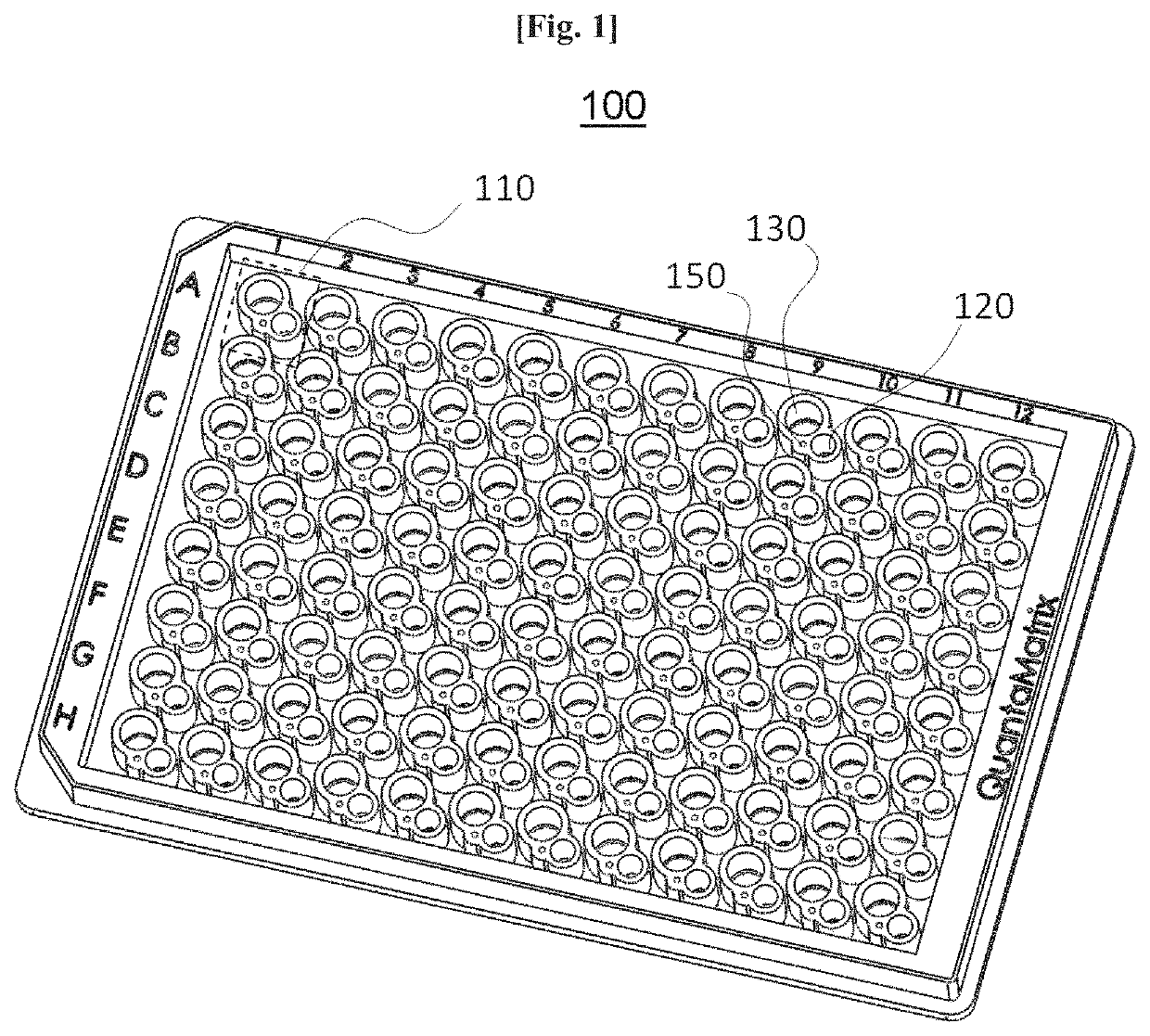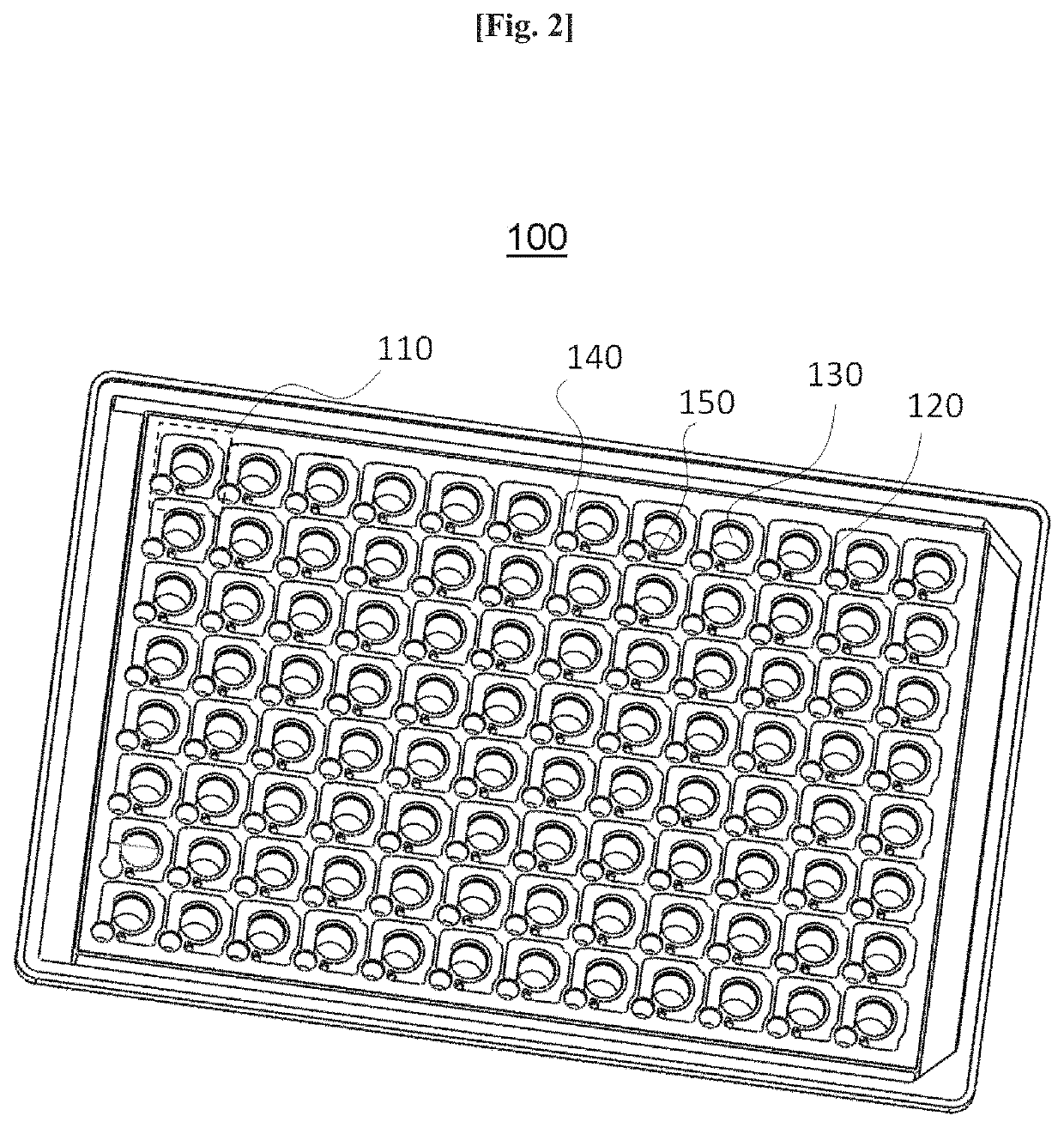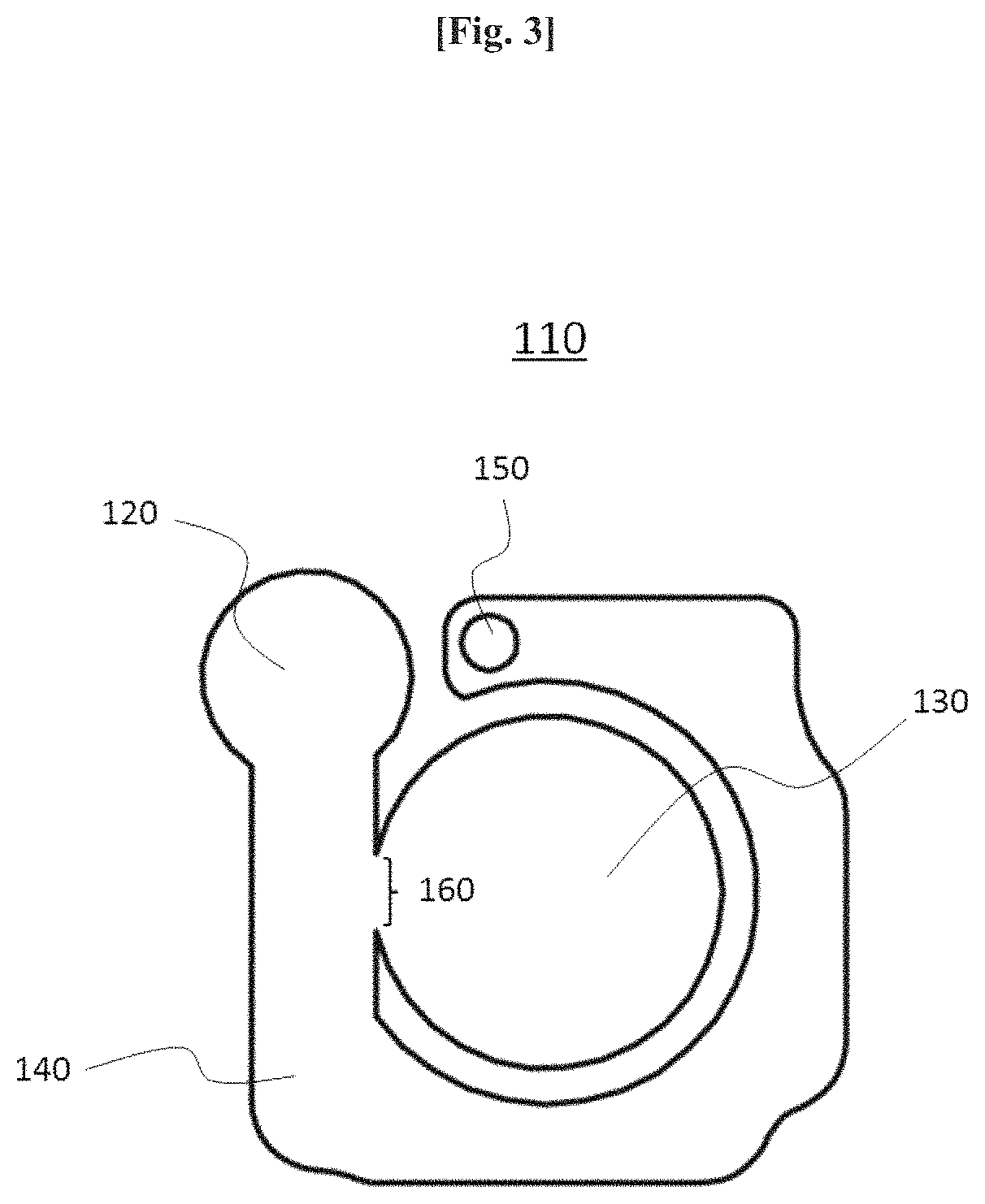Microfluidic multi-well-based cell culture testing device
a cell culture and microfluidic technology, applied in specific use bioreactors/fermenters, enzyme production/based bioreactors, biomass after-treatment, etc., can solve the problems of large time and labor required to test a large number of drugs, inability to monitor changes occurring in single cells against drugs in real time, and requiring a relatively long time of about 12 hours
- Summary
- Abstract
- Description
- Claims
- Application Information
AI Technical Summary
Benefits of technology
Problems solved by technology
Method used
Image
Examples
Embodiment Construction
[0006]One aspect of the present invention provides a microfluidic multi-well-based cell culture testing device that has an array structure of a plurality of aligned microfluidic well units, each of the microfluidic well units includes an inlet through which a first fluid enters, an accommodation compartment adapted to accommodate a second fluid therein, a microfluidic channel through which the first fluid flows, and an air outlet adapted to facilitate the entering of the first fluid, wherein the microfluidic channel is in communication with the inlet and the air outlet such that the first fluid is allowed to flow into and fill the microfluidic channel, wherein the accommodation compartment is designed in the form of a well such that the entering second fluid is retained, and a capillary valve is formed where a portion of the lower lateral side of the accommodation compartment is in communication with a portion of the lateral side of the microfluidic channel such that the first fluid...
PUM
| Property | Measurement | Unit |
|---|---|---|
| width | aaaaa | aaaaa |
| thickness | aaaaa | aaaaa |
| volume | aaaaa | aaaaa |
Abstract
Description
Claims
Application Information
 Login to View More
Login to View More - R&D
- Intellectual Property
- Life Sciences
- Materials
- Tech Scout
- Unparalleled Data Quality
- Higher Quality Content
- 60% Fewer Hallucinations
Browse by: Latest US Patents, China's latest patents, Technical Efficacy Thesaurus, Application Domain, Technology Topic, Popular Technical Reports.
© 2025 PatSnap. All rights reserved.Legal|Privacy policy|Modern Slavery Act Transparency Statement|Sitemap|About US| Contact US: help@patsnap.com



